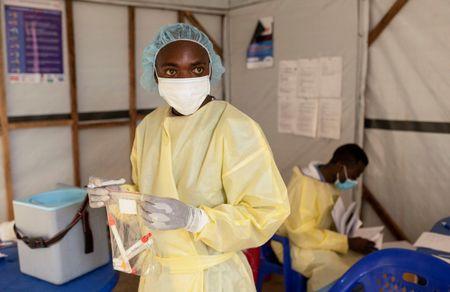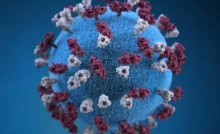What is ‘Dinga Dinga’, the Excessive Body-Shaking Disease Affecting Uganda?
In recent years, a new and alarming disease has been causing widespread concern in Uganda. Dubbed ‘Dinga Dinga,’ this mysterious illness is characterized by severe, uncontrollable body shaking, leaving those affected debilitated and in need of urgent medical attention. The disease has raised questions both within Uganda and internationally, as researchers and healthcare professionals struggle to understand its cause and find effective treatments.
‘Dinga Dinga’ is not only a physical ailment but a social challenge, affecting families, communities, and the healthcare system in the affected regions. As cases rise, the impact of the disease grows, creating a sense of urgency for public health officials and researchers to discover its origins, its transmission patterns, and possible interventions. This article delves into the details of the ‘Dinga Dinga’ disease, its symptoms, potential causes, and efforts to manage and mitigate its impact on Ugandan society.
What is Dinga Dinga?
‘Dinga Dinga’ is a colloquial term used in Uganda to refer to a condition that causes individuals to experience excessive and uncontrollable shaking or tremors. The disease has been reported mostly in rural areas of Uganda, where the affected individuals often lack access to adequate healthcare. The shaking associated with ‘Dinga Dinga’ is not like typical tremors caused by conditions such as Parkinson’s disease or fever-induced shivers. Instead, the shaking is severe, with the person affected losing control over their movements, often leading to falls, injuries, and extreme fatigue.
The disease primarily affects young adults and middle-aged individuals, with cases reported mostly in the northern and central regions of Uganda. It has been particularly alarming due to the lack of clear diagnosis and the rapid progression of symptoms in some cases. People who contract the disease experience debilitating physical tremors that prevent them from carrying out daily activities, such as walking, eating, or even sitting still.
The exact cause of ‘Dinga Dinga’ remains a mystery, with various theories being proposed by health professionals and researchers. While the disease shares similarities with other conditions, such as neurological disorders and tropical diseases, no definitive cause has been identified, which complicates efforts to treat and prevent its spread.
Symptoms of Dinga Dinga
The hallmark symptom of ‘Dinga Dinga’ is the uncontrollable shaking or trembling of the body. This shaking can be localized to one part of the body, such as the hands or legs, or it can affect the entire body. In some cases, the tremors are so severe that the person is unable to maintain balance, leading to frequent falls and an increased risk of injury. The intensity and frequency of the shaking can vary from person to person, with some individuals experiencing continuous tremors while others may experience intermittent episodes.
In addition to the shaking, other symptoms commonly associated with ‘Dinga Dinga’ include:
- Muscle Weakness: The continuous shaking can lead to muscle fatigue, making it difficult for individuals to perform even basic tasks. Muscle weakness often accompanies the tremors, further complicating daily activities.
- Headaches: Many individuals with ‘Dinga Dinga’ report persistent headaches, which may be a result of the intense physical exertion caused by the shaking.
- Nausea and Vomiting: Some affected individuals experience gastrointestinal symptoms, such as nausea and vomiting, which may be linked to the physical stress of the tremors.
- Fatigue: The constant shaking and the energy required to control the body can lead to extreme fatigue. Individuals may feel drained and unable to carry out normal activities, which can severely impact their quality of life.
- Loss of Coordination: As the tremors worsen, many individuals experience a loss of coordination, which can affect their ability to walk, stand, or even hold objects.
- Cognitive Symptoms: In some cases, affected individuals also experience cognitive symptoms, such as confusion or difficulty concentrating. These symptoms may be a result of the physical strain caused by the tremors or a separate aspect of the disease.
Possible Causes of Dinga Dinga
The origins and cause of ‘Dinga Dinga’ remain largely speculative, as no single factor has been conclusively identified. However, several theories have emerged regarding the potential causes of the disease.
- Tropical Diseases: Uganda is located in a region where several tropical diseases are prevalent, including malaria, typhoid, and various viral infections. Some researchers believe that ‘Dinga Dinga’ may be linked to these tropical diseases, either as a direct result of infection or as a complication of existing diseases. For instance, certain viral or bacterial infections can affect the nervous system and cause tremors or other motor symptoms. It is possible that ‘Dinga Dinga’ could be a manifestation of such infections, although more research is needed to confirm this.
- Neurological Disorders: Another possibility is that ‘Dinga Dinga’ is a neurological disorder, possibly related to the brain’s motor control system. Similar to Parkinson’s disease or essential tremor, the condition may involve dysfunction in the brain’s ability to control muscle movement. However, the rapid onset of symptoms and the widespread nature of the disease suggest that it may be something distinct from more common neurological conditions.
- Environmental Factors: Some experts believe that environmental factors may play a role in the development of ‘Dinga Dinga.’ Uganda’s rural regions are often exposed to poor sanitation, contaminated water sources, and agricultural chemicals. These environmental stressors could contribute to the development of tremors or neurological symptoms in susceptible individuals. Additionally, food security and malnutrition could exacerbate health conditions and make people more vulnerable to diseases such as ‘Dinga Dinga.’
- Genetic Predisposition: While there is no direct evidence linking genetic factors to ‘Dinga Dinga,’ it is possible that a genetic predisposition could increase an individual’s likelihood of developing the disease. If there is an inherited component, certain individuals may be more prone to the disease than others, although this is still speculative.
- Infectious Agents: Another leading theory is that ‘Dinga Dinga’ may be caused by an unknown infectious agent, such as a virus or bacteria, that specifically targets the nervous system. The widespread nature of the disease and its rapid onset in many individuals suggest that a contagious pathogen could be at play. However, no specific infectious agent has been identified, and further research is required to explore this possibility.
- Climate Change and Vector-Borne Diseases: Climate change and the resulting shifts in weather patterns have been linked to the spread of vector-borne diseases, which are transmitted by mosquitoes, ticks, and other vectors. While there is no direct evidence linking vector-borne diseases to ‘Dinga Dinga,’ the possibility of emerging diseases due to climate change is an ongoing concern for health experts in Uganda and the broader African continent.
Diagnosis and Treatment Challenges
Diagnosing ‘Dinga Dinga’ has proven to be a difficult task for healthcare providers in Uganda. Since the disease does not have a clear cause, it is often mistaken for other conditions, such as Parkinson’s disease, malaria, or even poisoning. This makes it challenging for doctors to provide an accurate diagnosis without extensive testing and evaluation.
Furthermore, there are no specific treatments for ‘Dinga Dinga’ at the moment. The lack of a definitive diagnosis means that treatment is generally focused on alleviating symptoms. This may include medications to reduce the severity of the tremors, pain management, and physical therapy to help affected individuals maintain mobility and strength. In many cases, patients are also treated for other underlying conditions, such as infections or nutritional deficiencies, which may exacerbate their symptoms.
The lack of specialized healthcare infrastructure in Uganda’s rural regions complicates the delivery of effective treatments. With limited access to healthcare facilities, many people suffering from ‘Dinga Dinga’ are unable to receive the care they need, which exacerbates the spread and severity of the disease.
The Impact on Communities and Healthcare Systems
The rise of ‘Dinga Dinga’ has had a profound impact on communities in Uganda. In the most affected areas, the disease has placed significant strain on healthcare systems, already burdened by other public health issues. Rural clinics and hospitals are overwhelmed by the number of cases, and there is a critical shortage of medical personnel with the expertise to diagnose and treat the disease.
The social impact of ‘Dinga Dinga’ is equally troubling. As many people affected by the disease are unable to work or care for their families, it has created a ripple effect across communities. Economic hardship, stigma, and mental health challenges have arisen as individuals with ‘Dinga Dinga’ are often seen as disabled or unfit to contribute to their communities.
Moving Forward: Addressing the Disease
In order to address the challenge posed by ‘Dinga Dinga,’ Uganda’s public health sector must prioritize research into the causes of the disease and develop effective diagnostic tools and treatments. Increased funding for healthcare and better access to medical resources in rural areas are also essential for providing support to those affected by the disease.
International collaboration, including support from global health organizations, could help Uganda combat this disease and improve healthcare infrastructure. With a clearer understanding of the causes and better treatment options, ‘Dinga Dinga’ could become a manageable condition rather than a widespread health crisis.
‘Dinga Dinga’ is a mysterious and debilitating disease that has affected many communities in Uganda. While much remains unknown about its causes, the severe shaking and tremors experienced by those who suffer from it highlight the urgent need for research, better healthcare access, and public health interventions. As the disease continues to impact lives, both locally and globally, it serves as a stark reminder of the need for ongoing investment in healthcare infrastructure and disease prevention, particularly in regions with limited resources.










